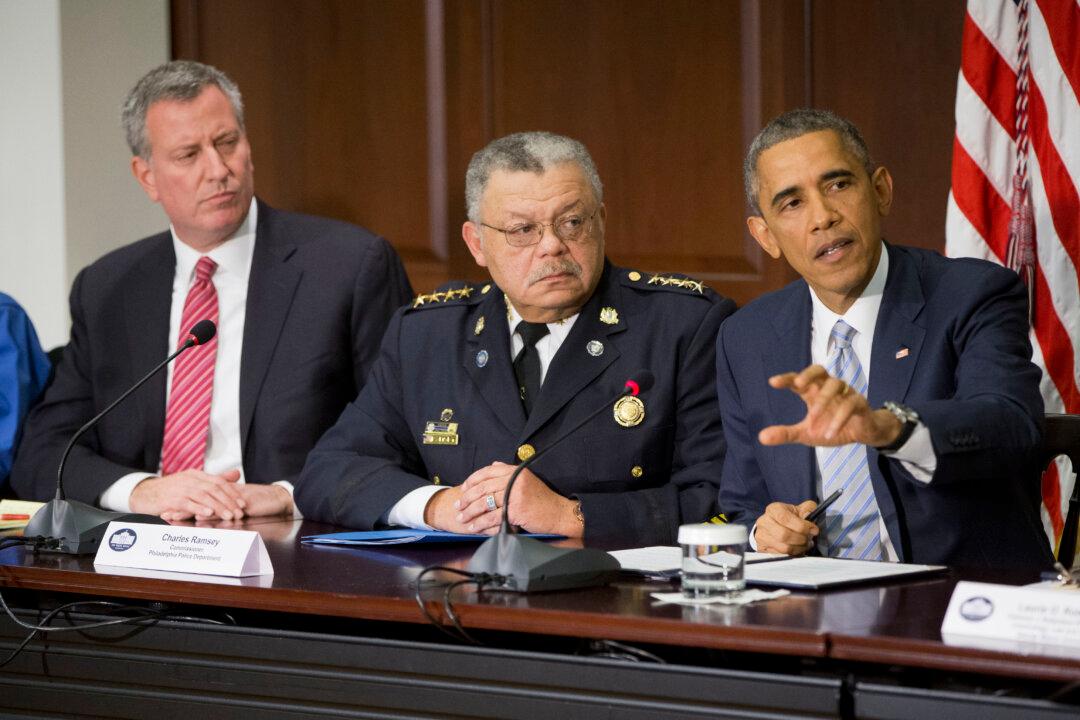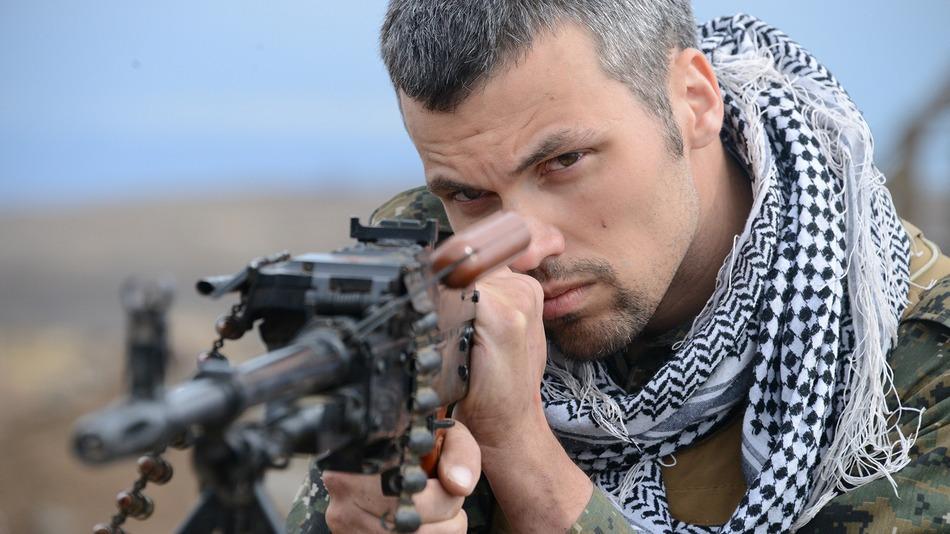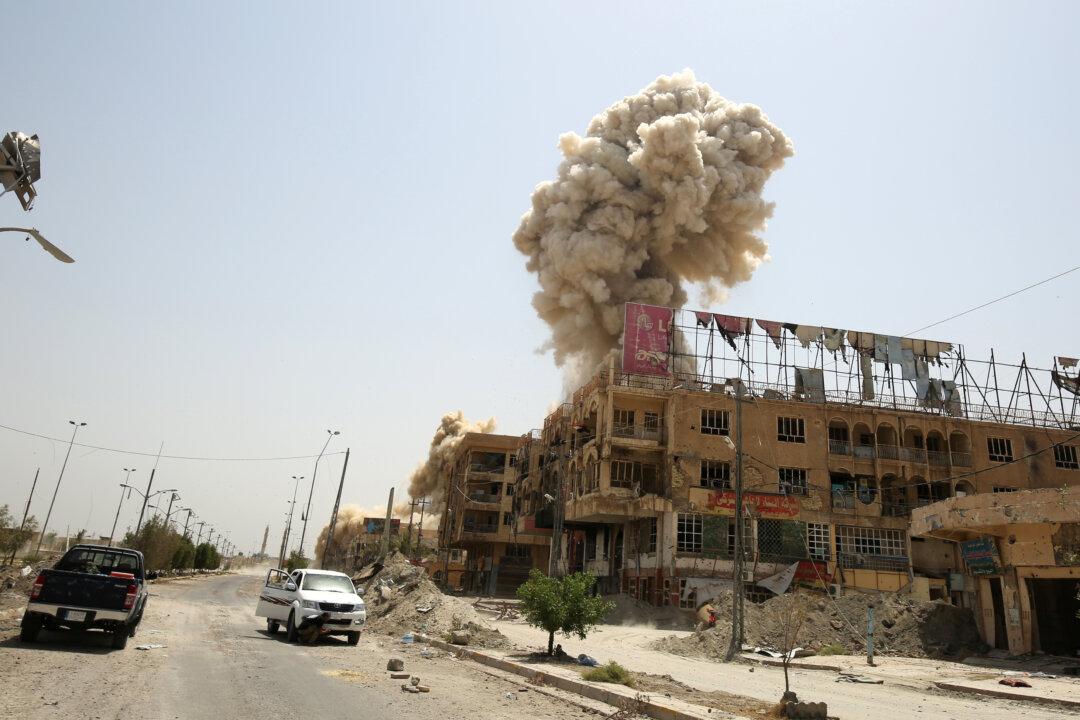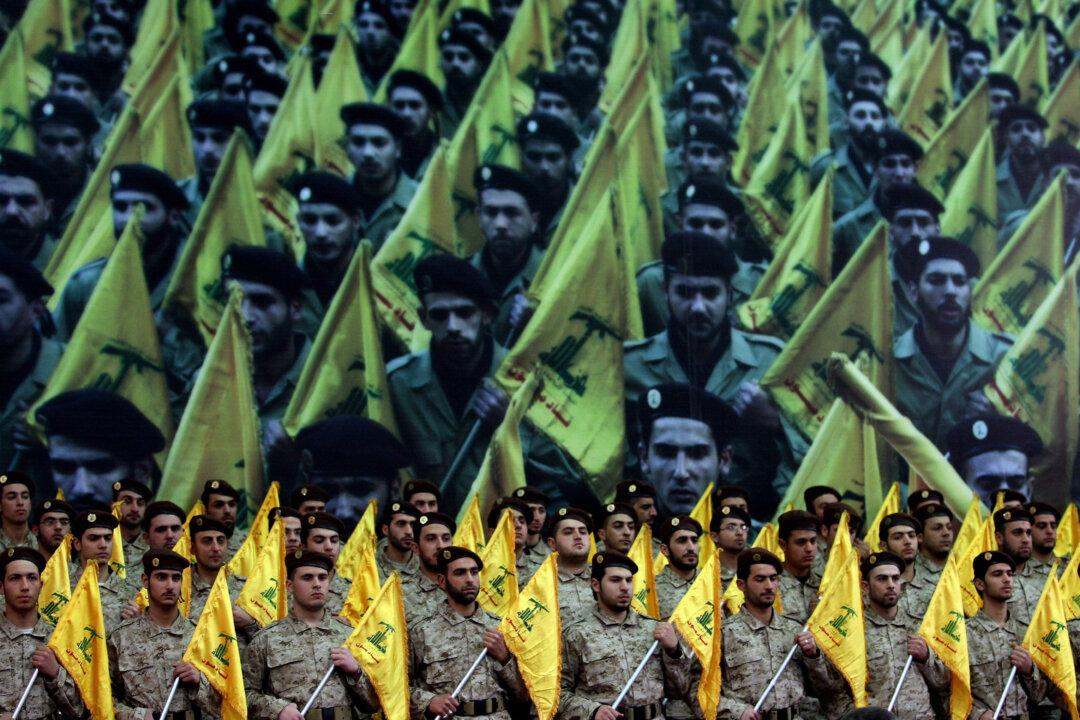Following a week of protests in cities around the country over the Ferguson grand jury decision, President Barack Obama on Monday promised new efforts to strengthen community policing and ensure that the U.S. won’t build a “militarized culture” within police departments.
The new initiative will provide financial support for up to 50,000 body-worn police cameras nationwide and training to enhance community–police relations. He also promised to reform federal government practices of providing military equipment to local law enforcement, including a new tracking system for any distributed equipment.
The announcement came after days of protests in Ferguson, Mo., where 18-year-old Michael Brown was shot and killed by a police officer in August. A week ago, a grand jury investigating the shooting announced that the officer, Darren Wilson, would not be indicted. The decision set off waves of national protests that turned to violence and arson in St. Louis, and multiple arrests in other cities for civil disobedience and blocking traffic.
On Monday, a nationally coordinated walkout led thousands of mostly high school and college students to leave class and protest in the streets.
“Ferguson laid bare a problem that is not unique to St. Louis,” said Obama on Monday from Washington, and there is “a simmering distrust that exists between too many police departments and too many communities of color; the sense that in a country where one of our basic principles—perhaps the most important principle is equality under the law—that too many individuals, particularly young people of color, do not feel as if they’re being treated fairly.”
“This is a problem that is national,” said Obama.
The president met with numerous U.S. mayors, and civil rights, community, and faith leaders, law enforcement officials, and members of academia in the Eisenhower Executive Office Building before his speech. Though the mayors of New York, Philadelphia, Boston, Milwaukee, and Gary, Ind., were present, the mayors of Ferguson and St. Louis were notably absent.
Immediately after the meeting, Attorney General Eric Holder flew to Atlanta to speak at a standing room only interfaith service with U.S. Attorney Sally Yates. Atlanta is the first of a series of meetings Holder will have with community leaders around the country in the coming weeks.
Prior to their arrival, the atmosphere in the room was electric, filled with calls for love and nonviolence. On arrival Holder received a standing ovation. His long and extensive speech that drew heavily from the memory of Dr. Martin Luther King Jr. earned thunderous applause.
“As we recommit ourselves to the cause with which he (MLK) entrusted us, it’s apparent that our nation’s journey is not yet over,” said Holder.
He added that the Justice Department’s investigation of Brown’s death, and an investigation into the allegations of unconstitutional policing in Ferguson remain “ongoing and active.”
Youth Leaders
Earlier in the day the president also met with several youth leaders in the Oval Office—some from Ferguson. Two were members of the newly formed Ferguson Commission, which is working on recommendations for better community policing practices in Missouri.
Along with the meetings and his remarks, Obama pledged that his administration would help find a better way for police to interact with the communities they serve.
The body camera portion of his initiative would include $263 million in federal funds to help local police departments buy body cameras, train police officers, and pay for data storage. Of that, $75 million could help purchase 50,000 body cameras. State and local governments would have to bear half the cost of the equipment and technology maintenance burden.
Also on Monday, the president announced an executive order to create a federal task force, to be chaired by Philadelphia Police Commissioner Charles H. Ramsey. It will focus on how to forge stronger bonds between police and communities while effectively fighting and preventing crime.
Obama said that with his last two years as president, he has made a personal investment in the issue and plans to see any needed changes through. “The president of the United States is deeply invested in making sure this time is different.”
He said his meeting with youth leaders had a particularly strong impact on him.
“When I hear the young people talk about their experiences it violates my belief in what America can do,” Obama said. “To hear young people feeling marginalized and distrustful even after they’ve done everything right.”
New York’s Approach
New York Mayor Bill de Blasio sat just two places down from the president.
The city with the largest police force in the nation, New York has been dealing with its own police–community frictions this year, particularly after the July death of Staten Island resident Eric Garner after a police officer used a chokehold to restrain him during an arrest.
Video of the arrest taken by a passerby was widely circulated online. Still, despite the visual account of what happened, multiple interpretations arose of whether or not a chokehold was used by the officer.
Citing the large number of complaints about police misconduct and abuses of power, local officials, including Public Advocate Letitia James, called for the NYPD to outfit its officers with body-worn cameras.
“It is clear that cameras will be able to provide law enforcement with an objective record of police–civilian encounters,” James said Monday in response to the president’s new commitment.
A pilot program outfitting 60 police officers working in the highest crime precincts is expected to begin in a few weeks. James had called for 15 percent of the city’s 35,000-strong police force to get cameras.
Outside the White House after the meeting, Mayor Bill de Blasio said he empathized with the pain of those most affected by the issue.
“We all feel it from a family perspective—what it means when people have to wonder if their child will come home at night. ... I think every night about my son making sure he comes home safely,” de Blasio said, referring to his son Dante.
Taking questions from reporters, de Blasio said New York had begun its process of trust building with local communities.
The city has begun retraining NYPD officers to reduce the use of force, a step introduced after the death of Garner. New York has also reduced its use of the controversial police tactic stop, question, and frisk. A policy to reduce arrests for possession of marijuana has also been implemented.
The Rev. Al Sharpton, president of the New York-based National Action Network, called the meeting of the president, vice president, elected officials, and law enforcement “an historic moment.” Many others who attended the White House meeting echoed this sentiment.
“If we lead to changing police policies and addressing the disproportionate police misconduct in black and Latino communities, then this meeting will be the beginning of a long walk to change.”
“We all pledged to give our best efforts, history will judge whether we lived up to it.”
Additional reporting by Mary Silver in Atlanta. The Associated Press contributed to this report.




